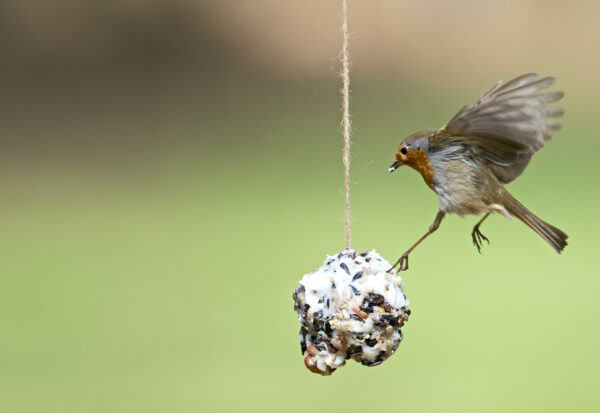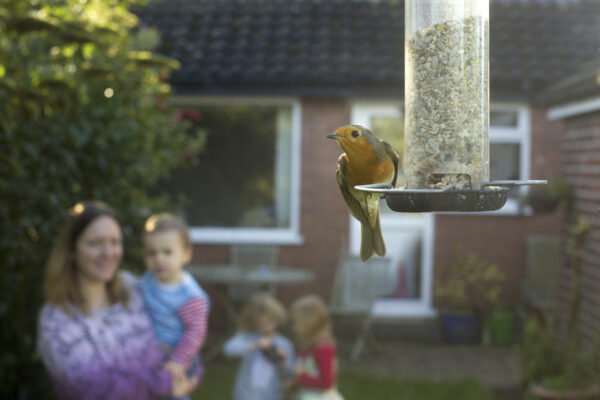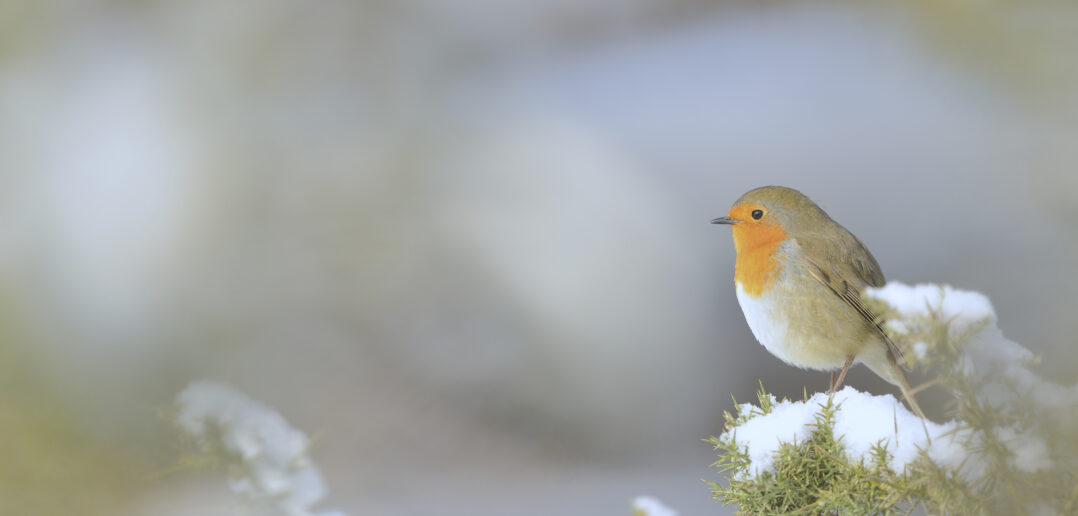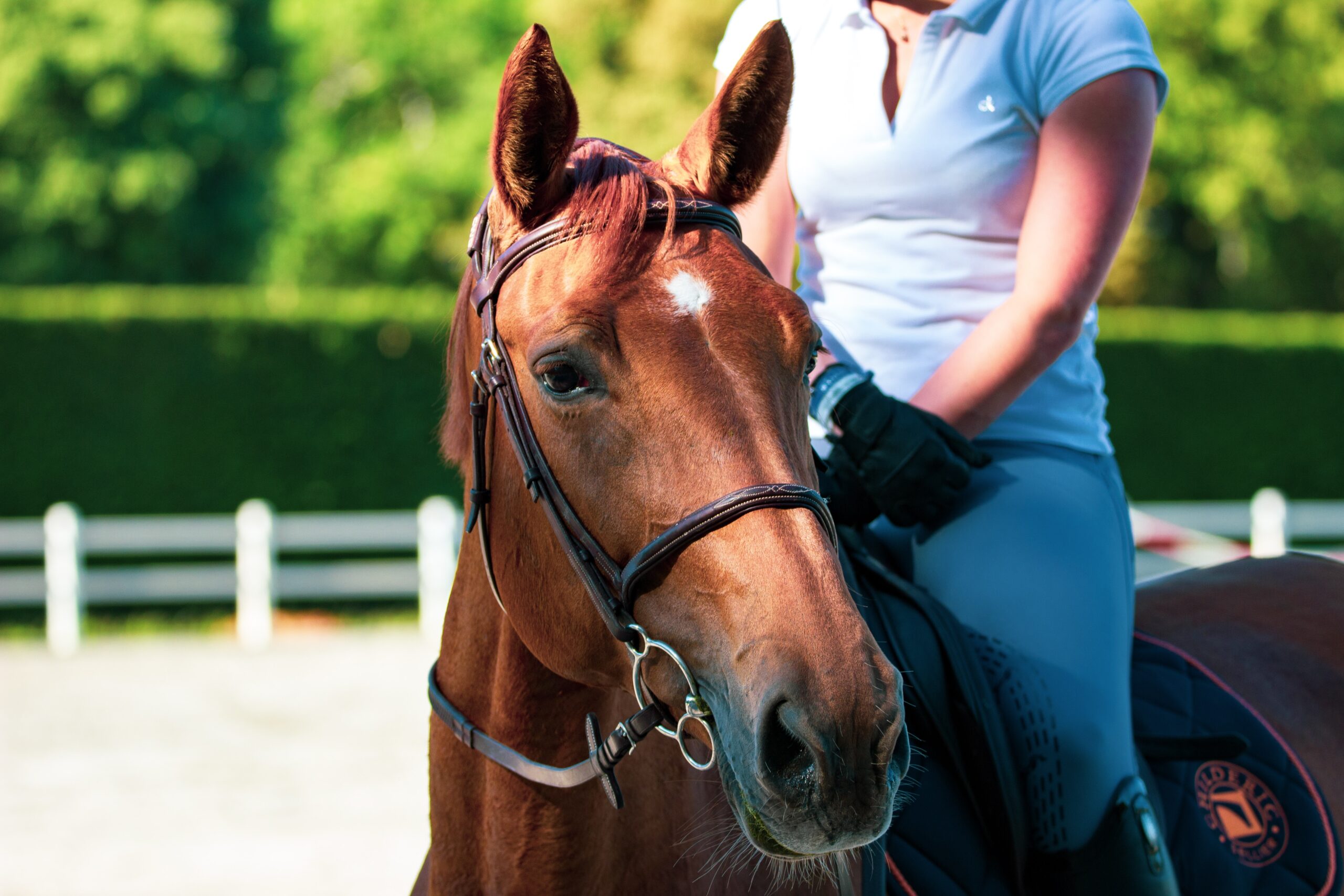Robins are with us throughout the year but many people only begin to really notice them around Christmas time. The robin’s association with the festive season is believed to have begun when scarlet-jacketed postmen were delivering Christmas cards, and the similarly-coloured robin redbreast soon became linked to this tradition.

Their tuneful voices, along with their cheeky attitudes and bright red breast, have endeared robins to the British public. In 1960 they were crowned the UK’s national bird. But don’t be fooled by their cute appearance, they are aggressively territorial and can be quite vicious, quick to drive away intruders. This is because they hold their territories all year round, warning off intruders with song. Males may hold the same territory throughout their lives, and will even attack a bundle of red feathers or their own reflection if they mistake it for another individual.
Robins sing nearly all year round and are often the only ones singing through the winter, usually under artificial lights or next to street lights.
Males and females look identical, but young birds have no red breast and are spotted with golden brown growing their red feathers after their first moult.
These small but confident birds are also known for following the gardener around as the soil is being turned over, waiting for tasty earthworms or other small invertebrates to be revealed. This behaviour began in the ancient forests of Europe where large animals like wild boar were rooting around in the mud and leaf litter and the robin learned to hang around to see what was unearthed.
The robin is a common species in the UK, it is green listed meaning it is not a threatened species and they number 6 million. Their numbers have been increasing since the mid 1980’s. Harsh and cold winters can reduce their numbers especially if we have prolonged freezing weather for a number of days but their increase is reflected in the milder winters we are now experiencing.
As with all bird species in the UK, habitat change and destruction, removing suitable nesting sites and insect food as well as disease are always potential threats but luckily the robin population is robust and adaptable and can seem to cope with change well.
But what can you do to help robins thrive?
You can do three things to help robins – provide food, water and shelter.
The RSPB are encouraging people up and down the UK to help Robins in these ways this Christmas and beyond.
Simply putting out a bird bath or a dish of water is great, make sure during the cold months this is prevented from freezing over.

As for food, the robin will happily eat a range of seeds, suet or fat balls and are particularly fond of mealworms. Mealworms are packed with moisture and protein. You can also provide fruit, or morsels of fat such as crumbled cheese or buggy nibbles.
Piles of logs and leaf litter will house plenty of spiders and other small animals that robins can find during the winter. Ivy is also great, providing shelter and invertebrate food during winter and spaces for robins to nest in spring.
An open fronted nestbox placed on a wall, shed or tree will give them somewhere to nest in and raise their young during the spring and summer and potentially somewhere to roost in during the winter.
Make sure you place the box out of the wind and rain, usually a North-Easterly direction is best. Allow a clear flight path to the box but make sure it isn’t in a too obvious place where it can easily be found by predators or disturbed by people. Robins will also nest in hedges so planting with wildlife in mind is also extremely beneficial.




